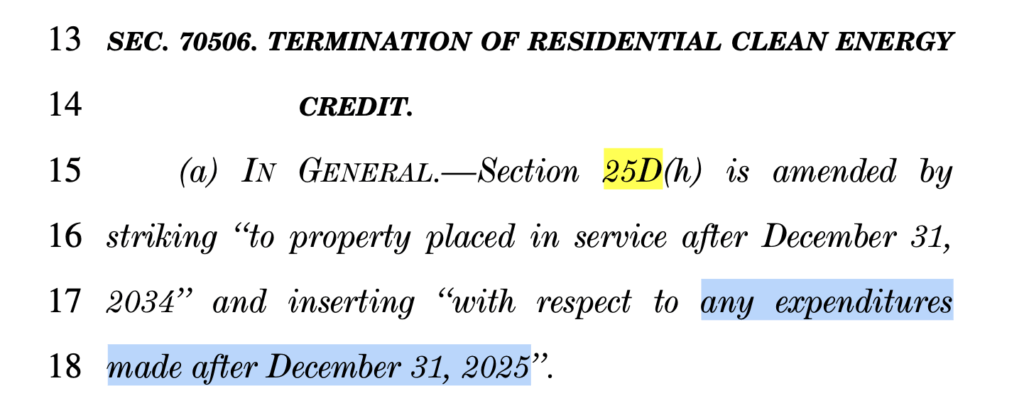Ever since the “One Big Beautiful Bill” budget passed Congress and was signed into law, one of the most common questions installers and homeowners alike have is about the residential solar investment tax credit (ITC). It’s often referred to as 25D, and it has saved homeowners literally millions of dollars while helping add countless gigawatts of clean energy to the grid. SEIA research shows that for every $1 paid out in renewable energy tax credits Americans tax payers recoup over $2.67 in reduced energy costs and economic growth.
These facts seemed to escape the attention of lawmakers eager to rein in federal support for solar. (Subsidies for coal and oil somehow made it into the bill.) The OBBB ends the residential ITC (25D) on December 31, 2025. It will make solar more expensive for homeowners to install and it will make electricity more expensive for everyone since it will curtail the single fastest way to add power to the grid (solar), according to Princeton’s REPEAT Project and others.
What’s more, there’s a ton of confusion around how far along a solar installation needs to be to qualify for the 25D tax credit before the end of the year. Does it need to be placed in service? Permitted? Construction started? Paid for?
This was by far the most common question in our webinar OBBB: Solar Policy Updates Unpacked, so we decided to get right into the text to answer for sure.

As written, the bill says “any expenditures.” So, if we take the text at face value, it seems that as long as the system is paid for before December 31, 2025, homeowners should be in the clear to get the tax credit. It’s likely that the IRS will release clarification as to what “any expenditures” means on August 21, per the instructions in the July 7 executive order.
Want to learn more about how the rest of the bill affects solar? Check out OBBB: Solar Policy Updates Unpacked on-demand.
